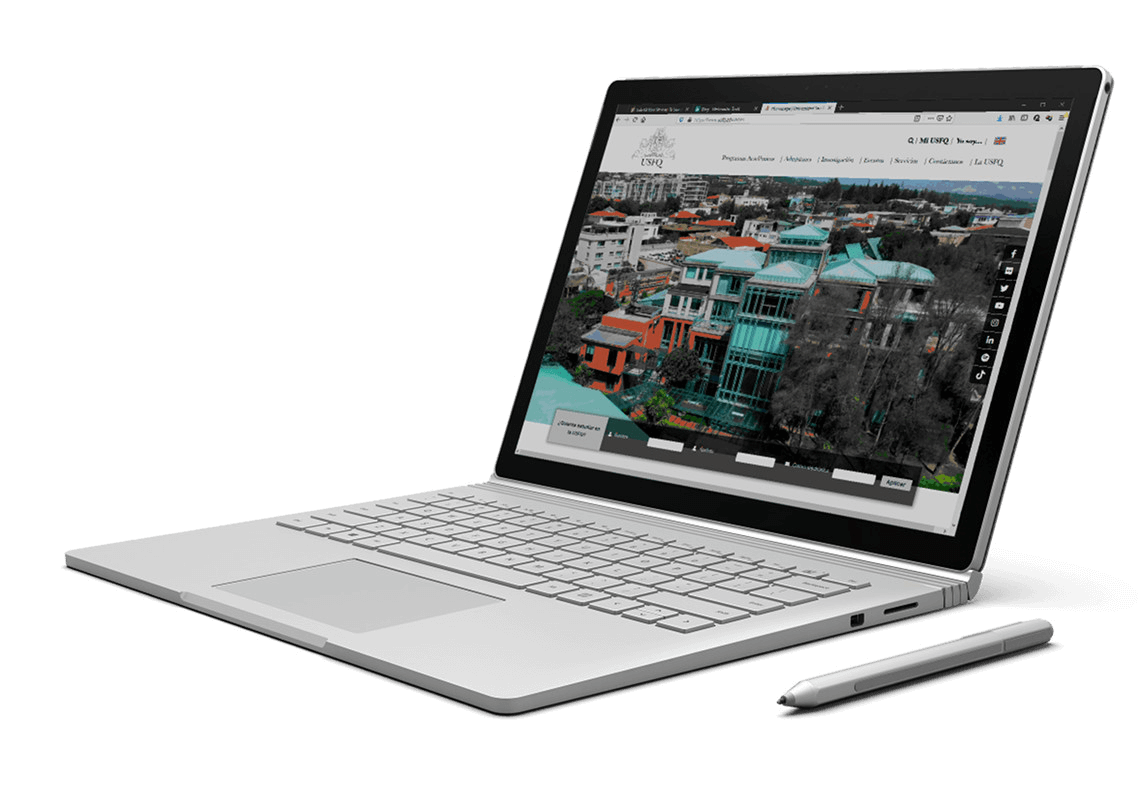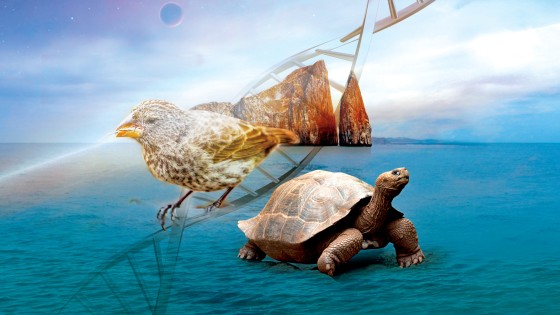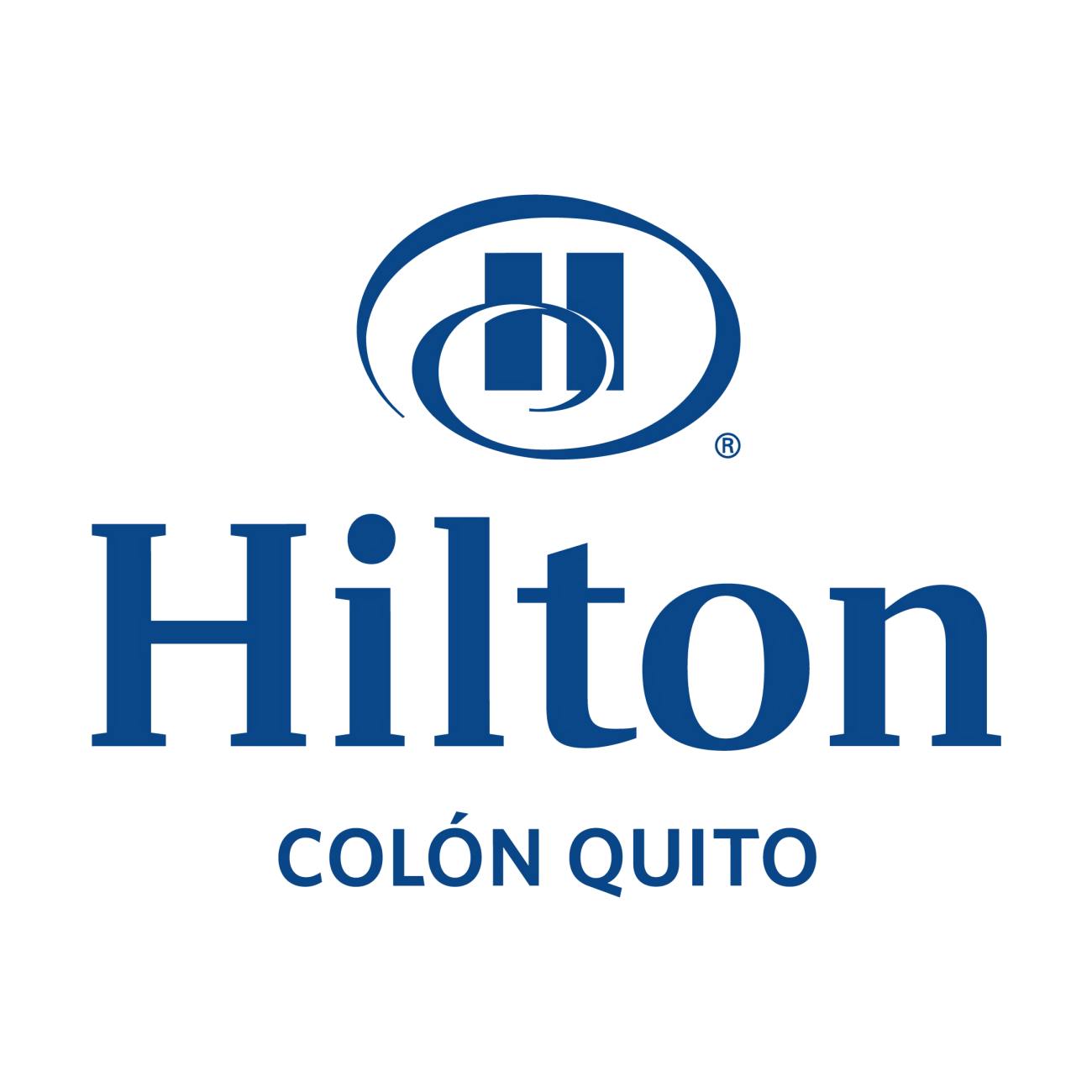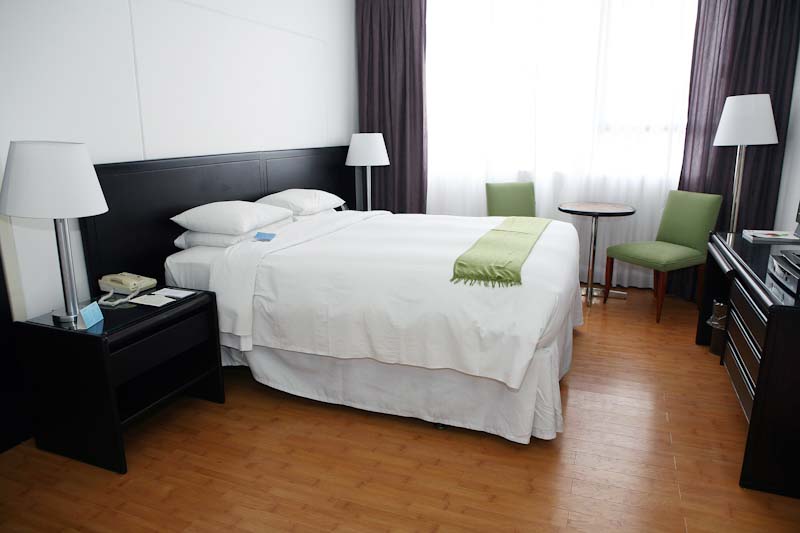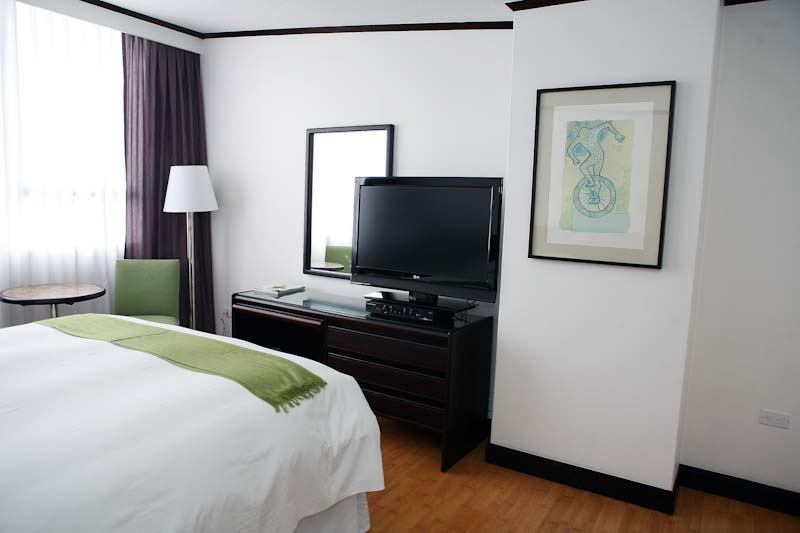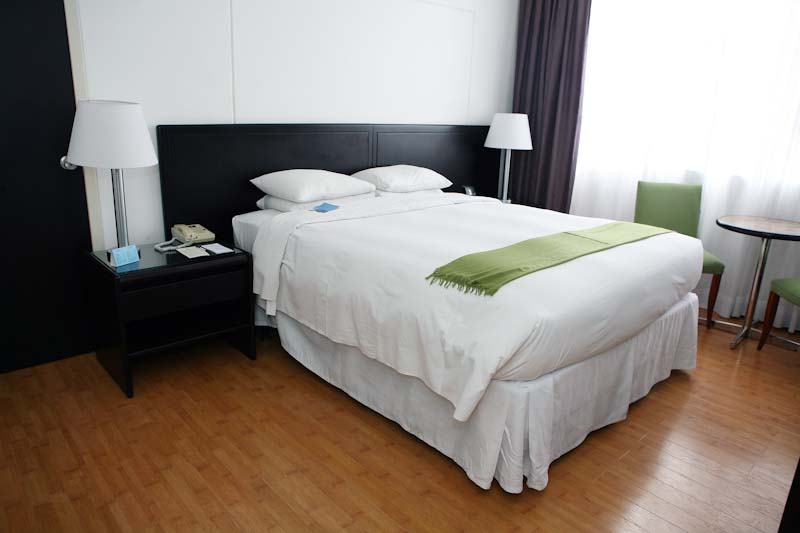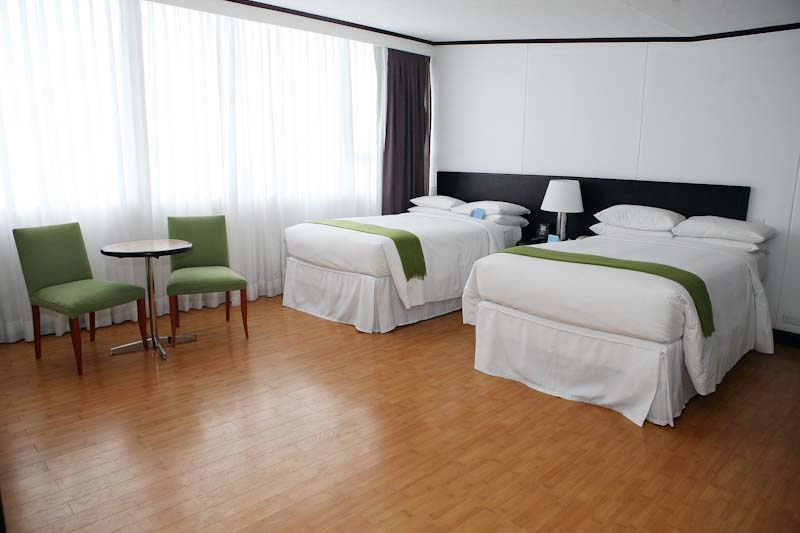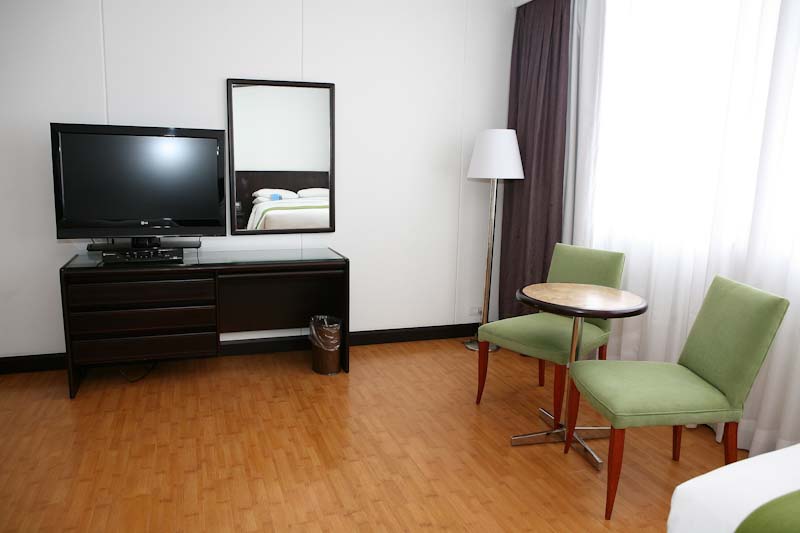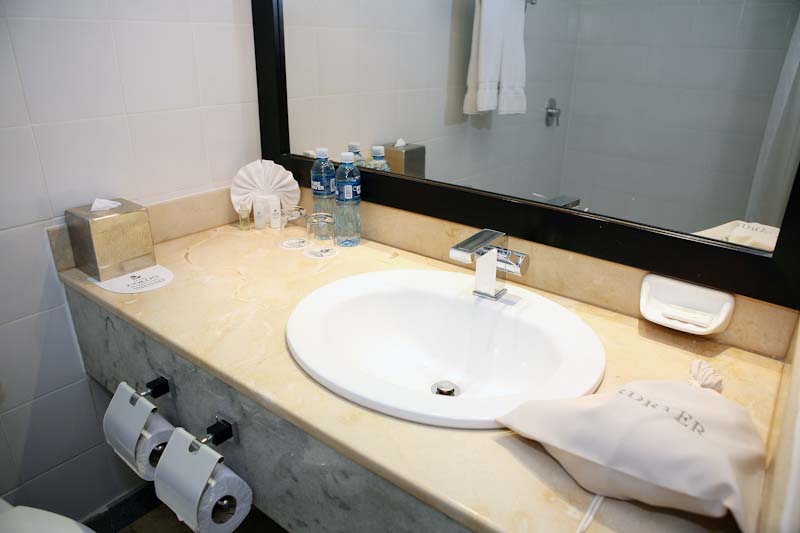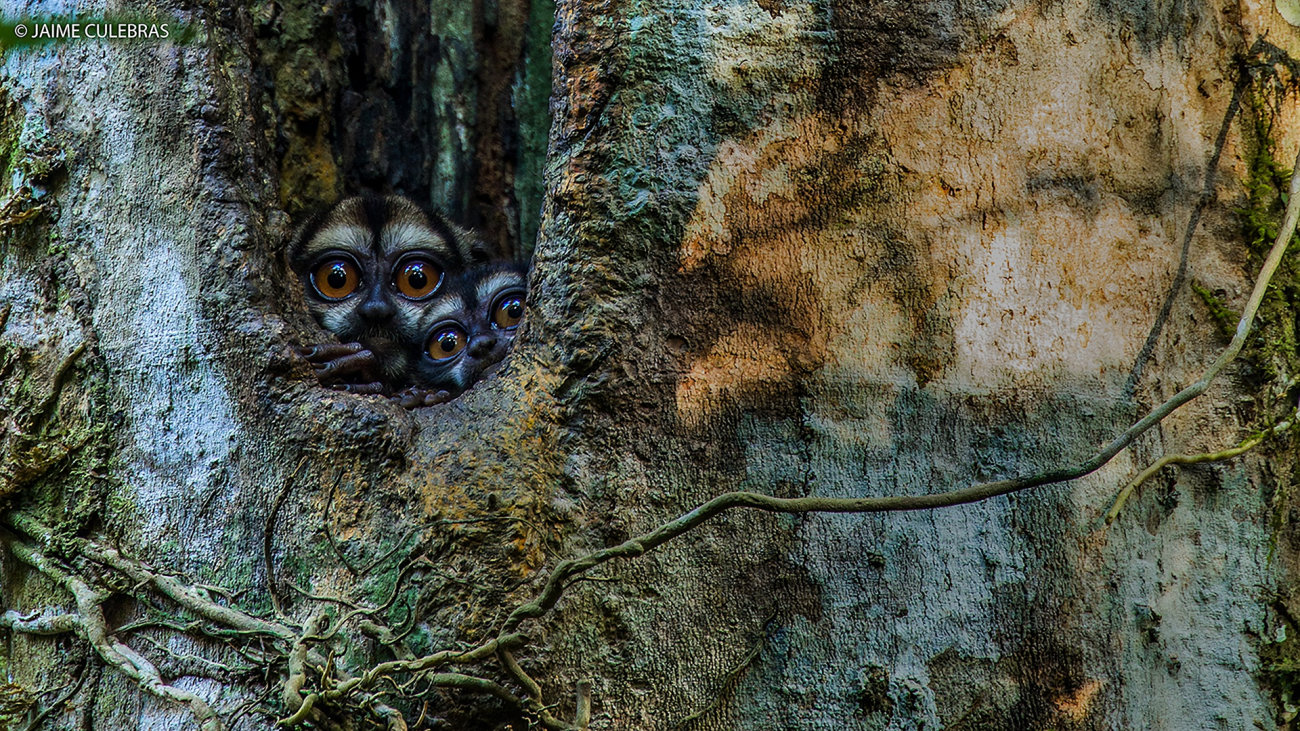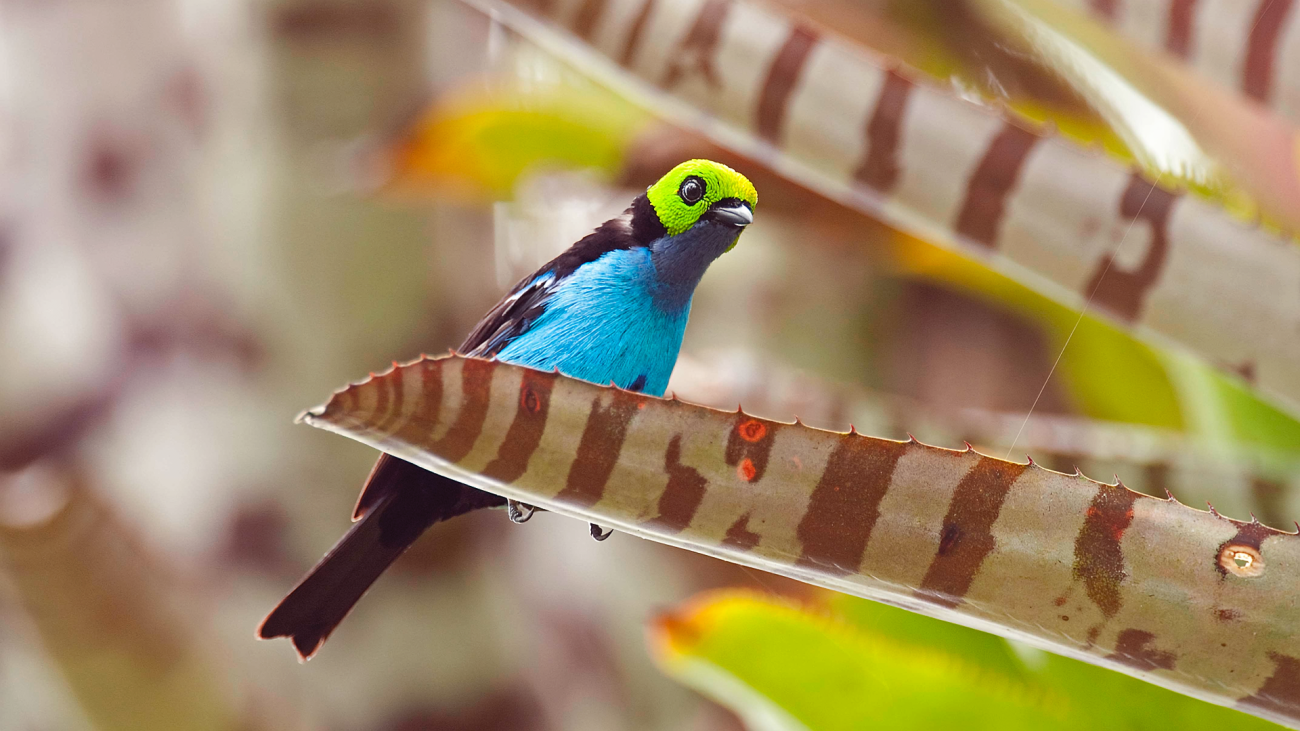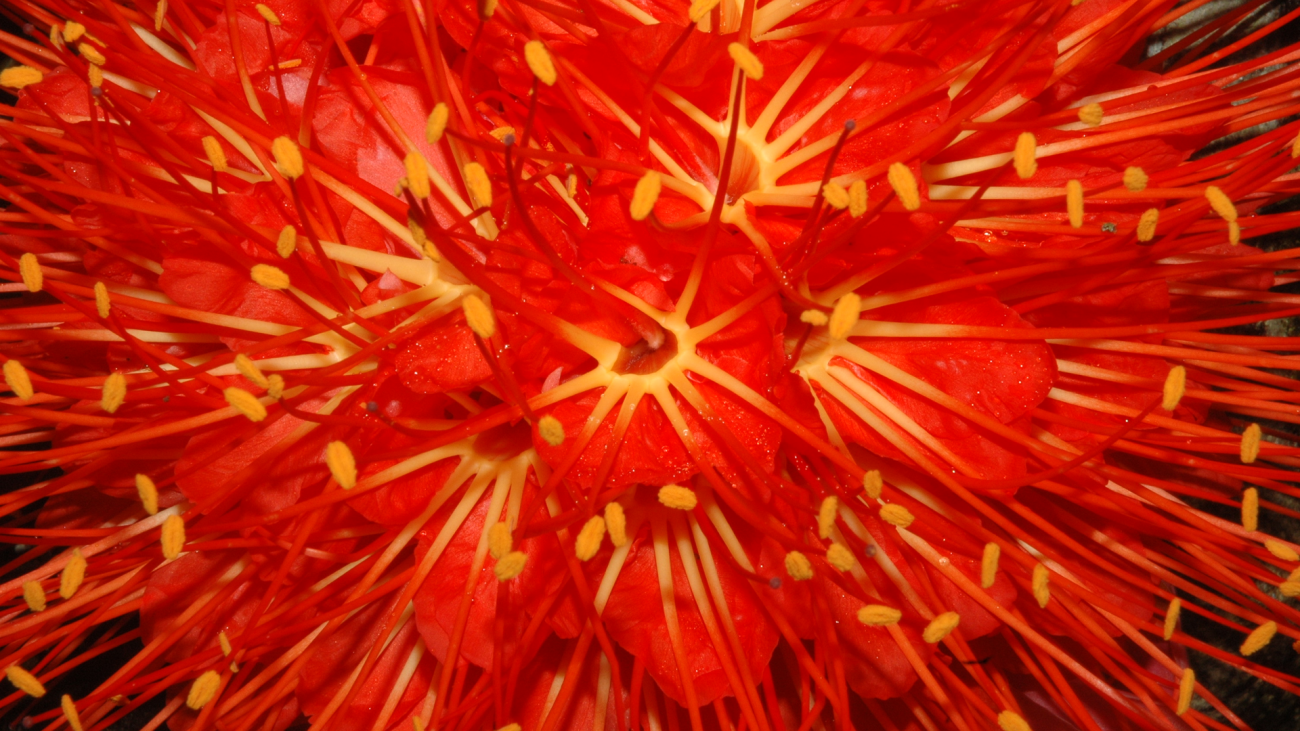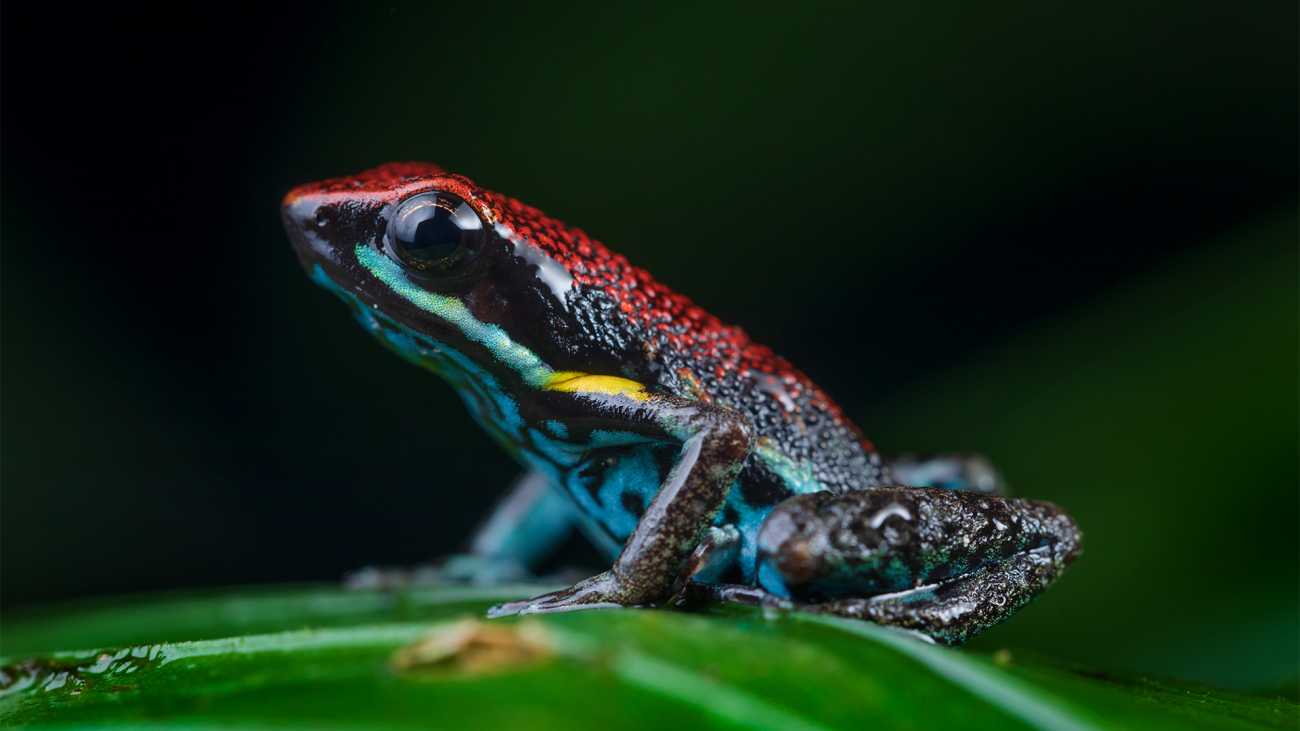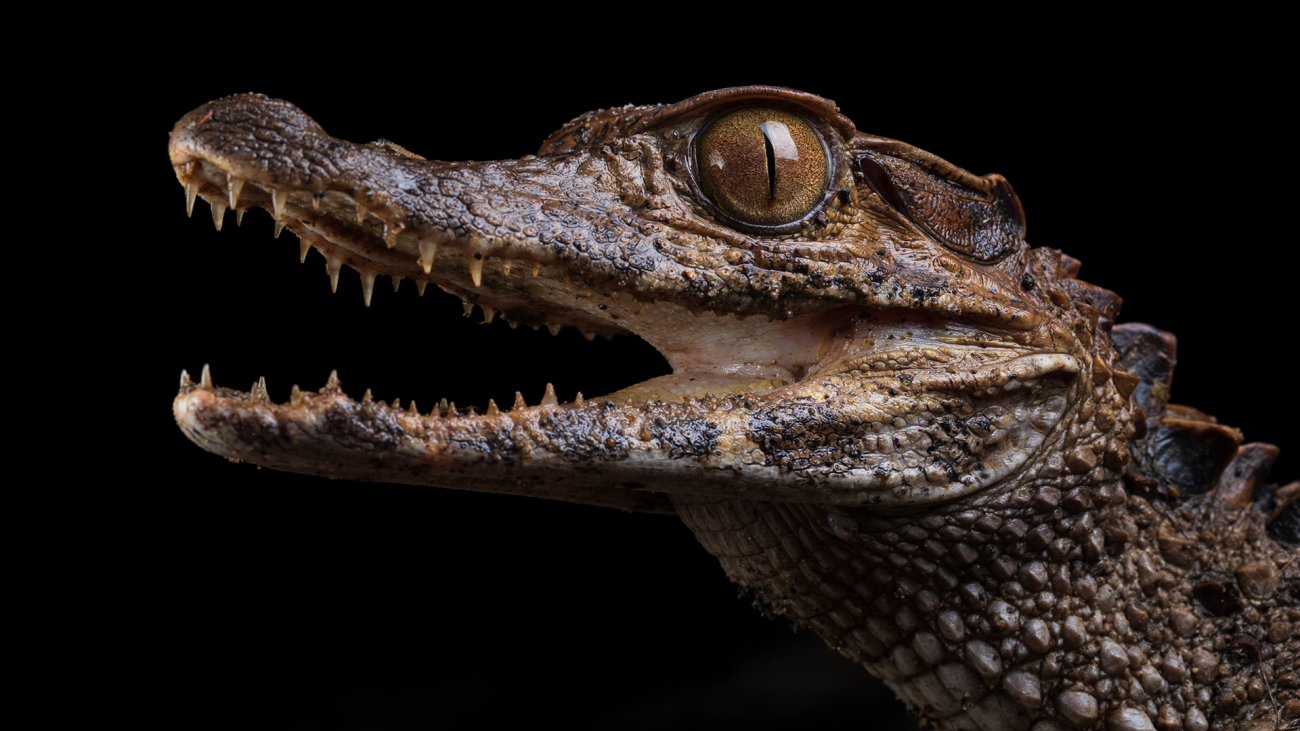Origins 2023
Purpose and Scope
The International Society for the Study of the Origin of Life (ISSOL) and the International Astronomical Union (IAU) Astrobiology Commission (F3) have the great pleasure of inviting all of those interested in the scientific aspects of the origin of life and the search for life beyond Earth and related issues to attend Origins 2023,. This conference provides an important opportunity for astronomers, biologists, chemists, natural historians, planetary scientists and others to meet and tackle the issue of the transition from non-living systems to the living state and the search for life beyond Earth. Some of the principle aims and goals of the conference are:
- Understand how planet Earth formed and the possibility that habitable exoplanets could form around other stars
- Understand how organic matter involved in life’s origin could have been formed and transitioned to a living system;
- Share new results regarding the physico-chemical environments on the early Earth;
- Exchange studies on the evolution of life at its earliest stages and identify the traces left in the
geological record; - Examine the possibility that a similar process could have evolved in other places of the solar system or exoplanets;
- Consider the philosophical and historical issues associated with the developments of these
research approaches.
Participation from early career researchers will be particularly welcome at the conference.
General Topics
- Chemistry before planets (molecular clouds, proto-planetary nebulae, small bodies...)
- Earth in context: formation and evolution of (exo)planetary systems
- Early Earth systems: atmosphere, lithosphere, ocean
- From prebiotic chemistry to (proto)biology
- Astrobiology and the origin of life: history, philosophy, education and outreach
- Protocells, cells, extremophiles & communities
- Early traces of life & the co-evolution of Earth and life
- Searches for habitable environments: from Earth to Exoplanets
- Searches for evidence of life in the Solar System and beyond
Organizers
Local Organizing Committee:
- Antonio Lazcano UNAM
- Arturo Becerra UNAM
- Jim Cleaves CIW
- Hervė Cottin LISA/UPEC
- Carlos Montufar USFQ
- Diego Quiroga USFQ
- Patricia Sierra USFQ
- Ana Teresa Pérez USFQ
Scientific Organizing Committee
- Jim Cleaves (ISSOL, USA) (Co-Chair)
- Hervé Cottin (IAU, France) (Co-Chair)
- John Brucato (IAU, Italy)
- Aaron Engelhart (ISSOL, USA)
- Julio Angel Fernandez Alvez (IAU, Uruguay)
- Misato Fukagawa (IAU, Japan)
- Paul Higgs (ISSOL, Canada)
- Zita Martins (IAU, Portugal)
- Connie Meinert (ISSOL, France)
- Antonio Lazcano (ISSOL, Mexico)
- Alicia Negron-Mendoza (ISSOL Mexico)
- Masatoshi Ohishi (IAU, Japan)
- Sudha Rajamani (ISSOL, India)
- Patricio Rojo (IAU, Chile)
- Nicolle Zellner (ISSOL, USA)
- Yufen Zhao (ISSOL, China)
Quito
Quito, formally San Francisco de Quito is the capital and the largest city of Ecuador. At an elevation of 2,850 meters (9,350 ft) above sea level, it is the second-highest official capital city in the world, after La Paz, and the one which is closest to the equator. Quito has a tropical highland climate. Because of its elevation and its proximity to the equator, Quito has a fairly constant cool climate. The average temperature at noon is 18.7 °C (65.7 °F) with a normal night-time low of 9.3 °C (48.7 °F) The annual average temperature is 14 °C (57 °F). The city experiences only two seasons: dry and wet. The dry season, June through September (4 months) is referred to as summer; the wet season, October through May (8 months) is referred to as winter. Annual precipitation, depending on location, is approximately 1,000 mm (39 in).
It is located on the eastern slopes of Pichincha, an active stratovolcano in the Andes Mountains. With a population of 2.800.000 (in 2022), Quito is the most populous city in Ecuador. It is also the capital of the Pichincha province and the seat of the Metropolitan District of Quito.
Due to its geographical location and elevation, Quito receives a great amount of solar radiation, being one of the locations in the planet that receives the most.
The historic center of Quito has one of the largest, least-altered and best-preserved historic centers in the Americas. Quito and Kraków, Poland, were among the first World Cultural Heritage Sites declared by UNESCO, in 1978. The central square of Quito is located about 25 kilometres (16 mi) south of the equator; the city itself extends to within about 1 kilometre (0.62 mi) of zero latitude. A monument and museum marking the general location of the equator is known locally as la mitad del mundo (the middle of the world), to avoid confusion, as the word ecuador is Spanish for equator.
If you want more information about Quito, please visit this page:
On Wednesday August 2nd you will have the opportunity to visit Quito historic center or Quito Middle of the World in a guided tour that will take approximately 4 hours. Following is a description of both tours so you can have an idea of the program.
You can sign up and pay this activity during the first two days of the conference. There will be an information booth at the venue
QUITO HISTORICAL DOWNTOWN
Quito, a world Cultural Heritage Site (Half day excursion)
Quito´s Historical Center, the largest and best preserved in Latin America, displays on its centuries old narrow streets, plazas, churches, monasteries and monuments a superb fusion of cultures and artistic styles which fascinates visitors and represents an unparalleled historic jewel.
Ecuador’s capital, Quito, founded in 1534, sits high in the Andes at an altitude of 2.850m. Quito is a monumental city, built over the ruins of the Inca’s northern imperial seat and a fabulous example of colonial architecture and art. Quito’s center is rich with 16th and 17th century churches and other buildings, which blend traces of European, and Indigenous styles. For these reasons and the outstanding preservation of its rich legacy, UNESCO declared the entire center of Quito a World Cultural Heritage site in 1978. It was the first city in the world to receive this qualification. Surrounded by imposing mountains and volcanoes and an enviable scenery all around, Quito is just minutes away from the Line, which marks our planet’s Latitude 0.0’0’’, the Equator.
This half-day sightseeing excursion offers the best of Quito with its rich cultural legacy, ornate facades, and dazzling gilt altars. The visit may include the Independence Square, The Archbishop’s Palace, The Metropolitan Cathedral, and:
San Francisco which is city`s most ancient large cathedral Its construction started in 1535, just one year after the city’s Spanish foundation, and it was concluded in the early 1600’s. Dominating the eastern flank of the historic namesake Square, the church of San Francisco presides majestically over the square. Inside the view is stunning: gold-panned columns and altars, painted walls and ceilings, the impressive central dome illuminated by the equatorial sun. Most remarkable feature of this church is the fascinating blend of cultures and art styles, between the European and the native indigenous peoples. Here the Christian symbols mix astonishingly yet in harmony with gold-pan Sun Gods and other symbols of the Indian’s own religious beliefs and Cosmo vision.
La Compañia de Jesús, built in 1635 and finished in 1722, is, outside and inside, a masterpiece of baroque art, one of the most beautiful and startling churches in the world. Its external façade is carved with infinite detail on pure granite stones brought from Mt. Pichincha. Inside, the view is awesome: the entire church, its panels, columns, altars, pulpit, ceilings and especially its main altar glitter and sparkle with tons of gold pan, a truly unique sight. Along its walls and altars, remarkable paintings and religious sculptures are found, created by some of the colony’s most celebrated indigenous artists, guided by the hands of Spanish, Flemish and Italian friars
THE MIDDLE OF THE WORLD
(Half day excursion)- 4 hours
A short drive north of the city will lead you to our planet’s Latitude 0 0’ 0’’. This is the place where you can idly stand with one foot on the northern hemisphere and the other one on the southern hemisphere…a unique experience….
The visit may include the giant monument, which marks the Middle of the World, and its surrounding complex, where visitors can learn about the 18th century French Geodesic expedition, one of the first executed under the modern scientific principles, which main´s purpose was to measure the roundness of the Earth.
Nearby is the Intiñan museum known as well as “The trek of Sun” where you will be guided through the wonderful world of the Andean Cosmo vision (view of the nature of the cosmos), Culture and Traditions. Mixed with didactic games where the physic laws show us the unique events that happen at the middle of the world.
Presenter Information
Posters should be printed in size A0 (84.1 x 118.9 cms / 33.1 x 46.8 inch).
Presenters should hang their posters on the morning of Monday July 31, in frames that will be provided at the venue.
Posters should be removed on Friday August 4th in the morning.
Program
Sunday, July 30th
15:00-16:00: Registration
16:00-16:15: Welcome from ISSOL and IAU Astrobiology Commission.
Henderson Cleaves & Hervé Cottin
16:15-16:30: Welcome from USFQ, Vice Rector
Andrea Encalada (USFQ)
16:30-16:45: Galapagos and the origin of species: insights from ecology and evolution
Carlos Valle (USFQ)
16:45-17:15: From Eratosthenes to Darwin
Carlos Montufar (President of USFQ)
17:15-17:30: Q&A for Carlos Valle and Carlos Montufar
17:30-19:30: Welcome Reception
19:30: Last bus departing for downtown Quito
Monday, July 31st
Chemistry Before Planets (Molecular Clouds, Proto-Planetary Nebulae, Small Bodies)
Session Chair: M. Nuevo
9:00-9:30: Chemical Complexity from Star-forming Regions to Comets
Maria Drozdovskaya (Remote)
9:30-9:45: The Composition of the Dust Particles Of Comet 67P/Churyumov-Gerasimenko Suggests a Pre-Accretionary Irradiated Surface Composition of Their Minerals and Organics.
Hervé Cottin, Inès Sansberro, Nicolas Fray, Martin Hilchenbach, John Paquette, Olivier Stenzel, Cécile Engrand, Donia Baklouti, Christelle Briois, Anaïs Bardyn
9:45-10:00: Nonracemic Isovaline in Meteorites: A Long-Time Question Revisited Show How and How Much Radiation Can Break Symmetry
C. Meinert, J. Bocková, J. Topin, V. Leyva, A. Garcia, U. Meierhenrich, N. Jones, S. V. Hoffmann, L. le Sergeant d’Hendecourt
10:00-10:15: Investigating the Building Blocks of Life by Ab Initio Calculations and Circular Dichroism Spectroscopy
J. Topin, J. Bocková, A. Garcia, U J. Meierhenrich, N. C. Jones, S. V. Hoffmann, C. Meinert
10:15-10:30: A Carbon Cycle in the Inner Solar System
Joseph Nuth
10:30-11:00: Coffee Break
Session Chair: C. Meinert
11:00-11:30: Organic Matter in the Samples of Carbonaceous Asteroid Ryugu collected by Hayabusa2
Hikaru Yabuta (remote)
11:30-11:45: Volatile Organic Compounds in Meteorites: The Scent of our Solar System
José C. Aponte, Frédéric Séguin, Ariel J. Siguelnitzky, Jason P. Dworkin, Jamie E. Elsila, Daniel P. Glavin, Harold C. Connolly Jr. and Dante S. Lauretta
11:45-12:00: Formation of Insoluble Organic Material from Laboratory Ice Photolysis Residues Exposed to High-Energy Ultraviolet Radiation
Michel Nuevo, Brian C. Ferrari, Scott A. Sandford, Christopher J. Bennett, Yu-Jung Chen, Yu-Jong Wu
Earth in Context
12:00-12:30: Solar System Formation in the Context of Exoplanets
Sean Raymond (remote)
12:30-14:00: Lunch
Session Chair: R. Lupu
14:00-14:30: Exoplanets and Their Surroundings
Judith Korth
14:30-14:45: The Origin of Water of an Earth-sized Planet in a Giant Impact
Yasunori Hori, Kenji Kurosaki
14:45-15:15: Inevitable, Transient Miller-Urey atmospheres on the Early Earth and the Advantages of Closed Basin Waterbodies Versus Deep-sea Vents for Prebiotic Synthesis
David Catling, Nick Wogan, Kevin Zahnle
15:15-15:30: Endogenous Production of Amino Acids in Early Earth Atmosphere by Solar Energetic Particles: Comparison with Exogenous Delivery
K. Kobayashi, V. S. Airapetian, T. Udo, Y. Kebukawa, J. Takahashi, H. Shibata, H. Mita, H. Fukuda, Y. Oguri, and N. Hagura
15:30-16:00: Coffee Break
Session Chair: K. Kobayashi
16:00-16:15: An Evolutionary System of Mineralogy: A New Classification for Astrobiology and Origins of Life
Robert M. Hazen, Shaunna M. Morrison and Anirudh Prabhu
16:15-16:30: Interaction of dl-Histidine, dl-Threonine and dl- Valine with Platinum and Tungsten Ferrocyanides and Its impact in Chemical Evolution and Origins of Life
Brij Tewari
16:30-16:45: Mineralogy of Evaporites and Sediments in the Alkaline Phosphate-Rich Lakes of the Cariboo Plateau
Kimberly P. Sinclair, Sebastian Haas, David C. Catling
16:45-17:15: Perhaps Not So Hadean After All: What Multiple Datasets Tell Us About Earth's First Billion Years
Nicolle Zellner
17:15-17:30: A Toy Model for Origins of Life based on Intersecting Streams
Paul B. Rimmer
17:30-18:30: Panel Discussion - Astrobiology in the Next 20 Years
Tuesday, August 1st
From Prebiotic Chemistry to (Proto)Biology (Part 1)
Session Chair: K. Fujishima
9:00-9:30: Nonenzymatic Metabolic Reactions and Life’s Origins
Joseph Moran
9:30-9:45: Electrochemical Carbon-Fixation Pathway in Simulated Hydrothermal-Vent Interfaces Relevant for the Emergence of Life
Thiago Altair, Victor Sojo, Yamei Li, Shawn McGlynn, Riuhey Nakamura, Douglas Galante, Hamilton Varela, Reuben Hudson
9:45-10:00: Spontaneously Formed Nanoscopic Micelles Seed Compositionally Reproducing Protocells
Doron Lancet, Amit Kahana, Roy Yaniv
10:00-10:15: Phosphorus Has the Ability to Trigger the Proteins, Nucleotides, and Membranes Three in One Co-Evolution
Yan Liu,Yuyan Chen, Yufen Zhao
10:15-10:30: Transition to the Ultimate Function of the Genetic Code: Robustness to Mutations for Increasing Complexity
Celia Blanco
10:30-11:00: Coffee Break
Session Chair: D. Lancet
11:00-11:30: Formation and Dynamics of Coacervate Protocells on Mineral Surface
Jiaxin Chen, Qingwen Bai, Yanzhang. Li, Zhijun. Liu, Yan. Li, Dehai Liang
11:30-11:45: Prebiotically Plausible Peptides Can Support Ribozyme Function
Joshua T. Arriola, E. Martinez Valdivia, Joan G. Schellinger, Tommy Le, Luke Leman, Ulrich F. Müller
11:45-12:00: Polymerization on the Rocks – New Results and New Questions
Jean-François Lambert, Ola El Samrout, Gloria Berlier, Hagop Abadian, Christel Gervais, Lise Bedoin, Sandra Alves
12:00-12:15: N-Formyl Aminonitrile and Amino Acid Derivatives Synthesis in Formamide Nicholas Green, David Russell, Sasha Tanner, John Sutherland
12:15-12:30: Peptides for the RNA-Based Biology: Regulating Ribozyme Function Through Self-Assembly
Peiying Li, Philipp Holliger, Shunsuke Tagami
12:30-14:00: Lunch
Astrobiology and the Origin of Life: History, Philosophy, Education and Outreach
Session Chair: S. Benner
14:00-14:30: Searching for Extraterrestrial Life Without a Definition of Life
Carol Cleland
14:30-14:45: Cosmic evolution: from 19th century Haeckel's idea to contemporary misunderstanding
Antonio Lazcano
14:45-15:00: Evolving Systems, Sources of Selection, and the Law of Increasing Functional Information
Michael L. Wong, Carol E. Cleland, Daniel Arends Jr., Stuart Bartlett, H. James Cleaves II, Heather Demarest, Anirudh Prabhu, Robert M. Hazen
15:00-15:15: A Radical Pedagogy: an Overview of Astroscience Education in Sub-Saharan Africa
Sohan Jheeta
15:15-15:30: The Effects and Mechanisms of Space Environment on Circadian Rhythms
Jinhu Guo, Zengxuan Zhou, Tongyue Chen, Xihui Gan
15:30-16:00: Coffee Break
Session Chair: A. Corpolongo
16:00-16:30: Astrobiology Education and Outreach
Chris Impey
16:30-16:45: Chiral Amplification of Amino Acids Driven by Clay Minerals in the Early Earth Microenvironment
Shanshan Sun, Dandan Guo, Shaohua Huang, Yufen Zhao
16:45-17:15: Geo-Centric Semi-Continuous Models for the Prebiotic Synthesis of RNA
Steven Benner
17:15-19:00: POSTER SESSION
Wednesday, August 2nd
From Prebiotic Chemistry to (Proto)biology (Part 2)
Session Chair: C. Lambert
9:00-9:15: Promising Candidates for Proto-RNA with Pyrimidine and Triazine Bases
Nicholas V. Hud
9:15-9:30: Formation of Nucleobases, Nucleosides and Nucleotides by One-Pot (Photo)Catalytic Reactions
Shoval Gilboa, Nitai Arbell, Yaron Paz
9:30-9:45: Primordial RNA assembly: Chemistry, Catalysis, and Compartmentalization
Saurja DasGupta, Stephanie J. Zhang, Travis Walton, Aleksander Radakovic, Zoe Weiss, Jack W. Szostak
9:45-10:00: Insights on the Origins and Evolution of RNA Modularity in Life
Luc Jaeger, Yi-Ling Kao, Lingyu Zhao
10:00-10:15: Evolutionary Power of Nucleic Acid Libraries with Increased Information Density
Craig A. Jerome, Tzu-Wei Peng, Shuichi Hoshika, Kevin M. Bradley, Steven A. Benner, Elisa Biondi
10:15-10:30: Origins of Life: Chemistry and Evolution
Loren Dean Williams, Kavita Matange, Vahab Rajaei, Moran Frenkel-Pinter, Gary Schuster, Nicholas V. Hud
10:30-11:00: Coffee Break
Session Chair: A. Lazcano
11:00-12:00: Nobel Session with Ada Yonath (Nobel Prize in Chemistry 2009) (Remote)
Next-Generation Antibiotics
12:00-12:15: Exploring the sequence space of self-reproducing ribozymes
C. Lambert, V. Opuu, F. Calvanese, M. Weigt, M. Smerlack, P. Nghe
12:15-12:30: Stability of DL-Glyceraldehyde under Simulated Hydrothermal Conditions: Synthesis of Sugar-like Compounds in an Iron(III)-Oxide-Hydroxide-Rich Environment under Acidic Conditions
Claudio Alejandro Fuentes-Carreón, Jorge Armando Cruz-Castañeda, Eva Mateo-Martí, Alicia Negrón-Mendoza
12:30-14:00: Lunch
Afternoon: Excursion in historical Quito or Ecuador monument (Departure directly from the university)
Thursday, August 3rd
Protocells, Cells, Extremophiles & Communities
Session Chair: S. Paula
9:00-9:30: Making (Generalized) Protocells in a Test Tube
Juan Perez-Mercader
9:30-9:45: Protocell Research 'in Vitro' and 'in Silico': Exploring the Interplay Between Physics and Chemistry That Paves the Way Towards Biological Complexity
Kepa Ruiz Mirazo
9:45-10:00: Synthetic Minimal Cells As a Physical Model of Protocells
Minoru Kurisu, Peter Walde, Masayuki Imai
10:00-10:15: Prebiotic Peptides Modulate Prebiotic Vesicle Stability and Growth, With Specificity for Sequence And Chirality: A Mechanism for the Selection of Functional Oligomers
Zachary R. Cohen, Zoe R. Todd, Lutz Maibaum, David C. Catling, Sarah L. Keller, and Roy A. Black
10:15-10:30: Primordial Evolution by Linking Sequence Information and Vesicle Reproduction
Akiko Baba, Keidai Sato, Shuna Asanuma, Ulf Olsson, Masayuki Imai
10:30-11:00: Coffee Break
Session Chair: E. Mullikin
11:00-11:30: Mobile Genetic Elements and the New Tree of Life
Gabriel Trueba
11:30-11:45: The Eco-Evolutionary Origins of Life: Experimental Evolution of Major Transitions
Maria Kalambokidis, Michael Travisano
11:45-12:00: The ESCAPE Project: An Experimental Apparatus to Study Chilean Extremophiles
Francisca Moena, Stefano Bovino, Miguel Martinez, Nicolas Martinez, Constanza Aguero, Pablo Solano
12:00-12:15: Effect of Dynamic Environmental Conditions on the Evolution of Self-Aminoacylating Ribozymes
Josh Kenchel, Alberto Vázquez-Salazar, Weiwei Li, Evan Janzen, Krishna Brunton, Lisa Fetter, Irene A. Chen
12:15-12:30: Self-Reproducing RNA Network Dynamics in Phase-Separated Protocells
Sandeep Ameta (Remote)
12:30-14:00: Lunch (+ ISSOL & IAU Closed Business Meeting)
Early Traces of Life & the Co-Evolution of Earth and Life
Session Chair: B. Orrill
14:00-14:30: Carbon, Nitrogen, and Their Isotopes as Tracers for Earth-Life Co-Evolution
Hiroyuki Kurokawa, Yuka Fujii, Kosuke Aoki, Matthieu Laneuville, Yamei Li, Naizhong Zhang, Haruka Sakuraba, Christine Houser, H. James Cleaves II, Shosei Aoki, Yuichiro Ueno
14:30-14:45: Early Evolution and the Nature of the LCA
Arturo Becerra
14:45-15:00: Unveiling the Breath of Giants: Exploring the Evolution of Oxygen-Dependent Enzymes in the Origin of Megaviruses
José Campillo, Antonio Lazcano, Wolfgang Cottom, Rodrigo Jácome, and Arturo Becerra
15:00-15:15: Determinism and Contingency in Light of the Coevolution of the Biosphere and Its Biota
David Schwartzman
15:15-15:30: Symbiosis Between Reproducers And Replicators at the Origin Of Cells
Eugene Koonin, Sanasar Babajanyan, Yuri Wolf, Andranik Khachatryan, Armen Allahverdyan, Purificacion Lopez-Garcia
15:30-15:45: Minimal conditions for homochirality in an origin-of-life inspired general chemical model
Jean-Sebastien Gagnon, David Hochberg (remote)
15:45-16:15: Coffee Break
16:15-17:15: Panel - Publish or Perish? From early stage and later in a scientific carrier
17:15-19:00: POSTER SESSION
19:00-21:00: Gala Dinner (*)
(*) Gala Dinner is included in the registration fees
Friday, August 4th
Searches for Habitable Environments: From Earth to Exoplanets
Session Chair: Y. Abdul Qadir
9:00-9:30: Determining the Limits of Life: Pitfalls on the Road
Purificacion Lopez-Garcia
9:30-9:45: The Collision History of Mars: Impact on Climate, Atmosphere and Life Development
Julio A. Fernández
9:45-10:00: Hypersaline RNA Worlds: Mars as a Prebiotic Chemistry Laboratory
Tanner Hoog, Nathaniel Gaut, Matt Pawlak, Kate Adamala, Aaron Engelhart
10:00-10:15: The Role of Continents on the Global Surface Temperature of an Earth-Like Planet
Alejandra Meza, Patricio Rojo
10:15-10:30: Planetary Atmospheres Through Eclipses: The Cases of Earth's Antarctica and Jupiter's Io
P. Rojo, R. Garreaud, D. Bozkurt, I. de Pater, S. Luszcz-Cook
10:30-11:00: Coffee Break
Session Chair: P. Lopez-Garcia
11:00-11:30: Urability: A Property of Planetary Bodies That Can Support an Origin of Life
David Deamer, Francesca Cary, Bruce Damer
11:30-11:45: Observing the Earth as an Exoplanet: Constraining Cloud Properties with Spectropolarimetry of Earthshine
Giulia Roccetti, Michael Sterzik, Claudia Emde and Mihail Manev
11:45-12:00: Extremophile Microorganisms: A Pioneering Approach to Biosignature Detection
Valeska Molina, Pablo Aguilar, Jeremy Tregloan-Reed, José Carcamo, Alvaro Aliaga, Cristina Dorador
Searches for Evidence of Life in the Solar System and Beyond
Session Chair: S. Ranjan
12:00-12:30: Finding life with LIFE
Daniel Angerhausen (Remote)
12:30-14:00: Lunch
14:00-14:30: Open Business meeting - Next meeting announcement
14:30-15:00: The Quest for Organic Molecules on Mars: Results, Challenges & Laboratory Support
Maeva Millan, Daniel P. Glavin, Jennifer L. Eigenbrode, Amy J. Williams, Caroline Freissinet, Cyril Szopa, Arnaud Buch, Amy McAdam, Doug Archer, Brad Sutter, James Lewis, Heather Franz, Jennifer Stern, Samuel Teinturier, Andrew Steele, Charles Malespin, Sarah S. Johnson, Paul R. Mahaffy
15:00-15:15: Morphological and Geochemical Analyses of Neoarchean Microbialites Inform the Search for Life on Mars
A. Corpolongo, A. Czaja, R. Jakubek, A. George, J. Kohl
15:15-15:30: Sampling Mars with NASA’s Perseverance Rover to Search for Ancient Life
Andrew D. Czaja, Christopher D. K. Herd, Tanja Bosak, Kenneth A. Farley, Kathryn M. Stack, Kathleen C. Benison, Barbara A. Cohen, Vinciane Debaille, Yulia Goreva, Elizabeth M. Hausrath, Keyron Hickman-Lewis, Elias N. Mansbach, Lisa E. Mayhew, Jorge I. Núñez, Nicolas Randazzo, Mark A. Sephton, David L. Shuster, Sandra Siljeström, Justin I. Simon, Meenakshi Wadhwa, Benjamin P. Weiss, Maria-Paz Zorzano, Adrian J. Brown
15:30-16:00: Coffee Break
Session Chair: M. Millan
16:00-16:15: A Robust, Agnostic Molecular Biosignature Based on Machine Learning. II. Implications
H. James Cleaves II, R. M. Hazen, Grethe Hystad, Anirudh Prabhu, Michael Wong, George D. Cody, Sophia Economon
16:15-16:30: A Re-Examination of Photochemical False Positives for Oxygen as a
Biosignature Gas on Temperate Terrestrial Exoplanets
S. Ranjan, E. Schwieterman, M. Leung, C. E. Harman, A. Fateev, C. Sousa-Silva, R. Hu,
S. Seager
16:30-16:45: Exofluorescence of Photosynthesis
Y. Komatsu, Y. Hori, M. Kuzuhara, M. Kosugi, K. Takizawa, N. Narita, M. Omiya, E. Kim, N. Kusakabe, V. Meadows, M. Tamura
16:45-17:00: Closing Remarks
17:00: End of Conference
POSTER LIST
(alphabetical by contributing 1st author)
A
(A1) Broadband Linear Polarimetry of Exoplanet Upsilon Andromedae B: Constraints on the Orbital and Physical Parameters
Yasir Abdul Qadir, Andrei V. Berdyugin, Vadim Kravtsov, Vilppu Piirola, Takeshi Sakanoi,
Masato Kagitani, and Juri Poutanen
B
(B1) Adsorption of Nitrogenous Bases in Clays of Prebiotic Interest. Relevance in Chemical Evolution.
Heber Octavio Barragán-Mayet, Alicia Negrón-Mendoza
(B2) Ancestral State Reconstruction of the Last Eukaryotic Common Ancestor
Nico Bremer, Fernando Tria, Josip Skejo, Sriram Garg, William Martin
C
(C1) Hypothesis on the Prebiotic Origin of an Energy-Conserving Glycolytic Pathway
Ricardo Cabrera
(C2) A Genetic Perspective on De-extinction of South American Mammalian Megafauna from the Holocene and Pleistocene
Ana P. Cacao, Roberto J. León-E, Juan Carlos Collantes, Diego F. Cisneros-Heredia
(C3) Nucleic Acid Replication Enabled by a Liquid-Solid Phase Transition: A Robust Prebiotic Method for Circumventing The Strand Inhibition Problem
Bryce Clifton, Martha Grover, Nicholas Hud
(C4) Microbiological viability of Deinococcus sp. UDEC-P1 chilean extremophile under outer space conditions (the ESCAPE project)
Constanza Agüero, Stefano Bovino, Antonia Beltrán, Nicolás Martínez, Francisca Moena, Pablo Solano, Miguel Martínez
(C5) Do Astrobiologists Need a Definition of Life?
Andrea Corpolongo
(C6) Low Complexity Regions as Hallmarks in a Viral RNA Proteome.
Wolfgang Cottom-Salas, Israel Muñoz-Velasco, Abelardo Aguilar-Cámara, José Campillo-
Balderas, Antonio Lazcano, Adrián Cruz-González, Ricardo Hernández-Morales, Alberto
Vazquez-Salazar, Arturo Becerra
(C7) Mediating Reactions with Complex Prebiotic Peptide Ensembles as Required During Origin of Life Processes
Edward Cross, Andrew Surman
(C8) Study of Acetonitrile-Solid-Surface Interactions in Hydrothermal Systems: Implications For Astrobiology
J. Cruz-Castañeda, A. Meléndez-López, A. Negrón-Mendoza, S. Ramos-Bernal, A. Heredia
D
(D1) The Impact of Trace Components on Titan’s Atmosphere Haze Formation: A Possible Oxygenated Prebiotic Compounds Synthesis
Sebastián Mendoza-Téllez, Rafael Navarro-González, José G. De la Rosa Canales, Paola Molina Sevilla
(D2) Arginine Sorption Mechanics in Sodium Montmorillonite Under Extreme Conditions
Josué Fabián Díaz Aguilar, Alicia Negrón Mendoza
F
(F1) Nucleoside Phosphorylation in Supercritical CO2-Water Environment
Shotaro Tagawa, Ryota Hatami, Kohei Morino, Shohei Terazawa, Kosuke Fujishima
G
(G1) A Plausible Mechanistic Network for Abiotic Peptide Synthesis from Amino Acid Amide
Dingwei Gan, Xiangmin Lei, Renwu Zhou, Songsen Fu, Jing Sun, Rusen Zhou, Jianxi Ying, Kostya (Ken) Ostrikov and Yufen Zhao
(G2) Jeewanu: Shedding Light on the Formation and Structural Properties of Organo-Molybdenum Based Microstructures
Pavani Ganju, David Baum
(G3) Characterization of Algae-Bacteria Consortia from Ecuador with Potential Wastewater Remediation Capacities
Juan José Guadalupe, Miguel Pazmiño-Vela, Gabriela Pozo, Valeria Ochoa-Herrera, Andrés Torres Salvador and María de Lourdes Torres*
(G4) The Origin and Evolution of Glassfrogs
Juan M. Guayasamin, Santiago Castroviejo-Fisher, Carl R. Hutter, Angela M. Mendoza-Henao, Eva Ringler, Cynthia P. A. Prado, Kelly R. Zamudio, Gabriela Parra-Olea, Anyelet Valencia-Aguilar
H
(H1) A Robust, Agnostic Molecular Biosignature Based on Machine Learning. I. Methods
Robert M. Hazen, H. James Cleaves, Grethe Hystad, Anirudh Prabhu, Michael Wong, George Cody, Sophia Economon
(H2) The Effect of Phosphorylation States on Nonenzymatic Polymerization of Ribonucleotides
Varun Kitson, Quentin Sanders, Avinash V. Dass, Paul G. Higgs
J
(J1) Viral RNA-Dependent Polymerases Probably Diverged From Eukaryotic Replicative Polymerases Rodrigo Jácome, José Alberto Campillo-Balderas, Arturo Becerra, Antonio Lazcano
K
(K1)Origin of Life: The Quadruplex World Hypothesis
Besik Kankia
(K2) Chirality Emergence of Organic Molecules by Circularly Polarized Lyman-alpha (121.6nm) Irradiation; Effects of Magnetic Field Application
Masahiro Kobayashi, Jun-ichi Takahashi, Hiroshi Ota, Gen Fujimori, Koichi Matsuo, Kensei Kobayashi, Yoshitaka Taira, Masahiro Katoh, Hiroaki Nakamura, Yoko Kebukawa
(K3) Evolution Toward Biology: Investigating Enantiomeric Excess and Information Storage in Early Protocells
Konstantin Konstantinov, Alisa Konstantinova
(K4) Growth of Methanogens on Three Clays that Have Been Identified on Mars
Timothy Kral, Anthony Bartels, Hailey Littrell, Ryan Pohlkamp, Torah Trail
L
(L1) An Ecological Perspective on the De-extinction of South American Mammalian Megafauna from the Holocene and Pleistocene
Roberto J. León-E, Ana P. Cacao, Juan Carlos Collantes, Diego F. Cisneros-Heredia
(L2) Multiresistant Conjugative Plasmid and Its Biological Cost on Different Origins Escherichia Coli
Lazaro Lopez and Gabriel Trueba
(L3) The Impact of Solar UV Radiation on Post-Impact Early Earth Atmosphere
Roxana Lupu, Kevin Zahnle, Nicholas Wogan
M
(M1) The 14N/15N Isotopic Ratio in Protoplanetary Disk V4046 Sgr
Luna Marín, Viviana Guzmán
(M2) Evidence of Genetic Recombination of Leptospira
Lorena Mejia, Pamela Mosquera, Gabriela Ortiz, Giuliana Pazmino, Belén Prado, Paúl Cárdenas, Fernando González-Candelas, Verónica Barragán, Gabriel Trueba
(M3) Study of Interaction Among Carboxylic Acids and Clays: The Role of the Interchangeable Cations A. Meléndez-López, J. Cruz-Castañeda, A. Negrón-Mendoza, S. Ramos-Bernal, A. Heredia
(M4) Analysis of the Presence and Distribution of Cytochromes and Tetrapyrrole Biosynthesis Pathways in Archaea
Luca D. Modjewski, Katharina Trost, William F. Martin
(M5)Salt Flats in the Atacama Desert: A Window into the Origins of Life and Exoplanetary Habitability
V. Molina, P. Aguilar, C. Dorador
(M6)How the Moon-Forming Impact Sparked Life's Autotrophic Origin
Natalia Mrnjavac, William F. Martin
(M7)The Formation of Carbon-Sulphur Biomorphs as Protocells in Early Earth Environments
Sanaa Mughal, Julie Cosmidis
(M8) Numerical Solutions to the Ecological Dynamics of Shadow Biospheres
S. Mughal, P. Rimmer, O. Shorttle, E. Mitchell
(M9) Prebiotic Compartments on the Early Earth: Hydrothermal Vent Coacervate and Ocean Liposome Models
Ella Mullikin, Dr. Saehyun Choi, Dr. Emma Tackman, Dr. Chris House, Dr. Miriam Freedman, Dr. Chris Keating
N
(N1) Exploring RNA-Binding Capability Within the Sequence Space of Restricted Amino Acid Alphabet
Shota Nishikawa, Hidenori Watanabe, Naohiro Terasaka, Takayuki Katoh, Kosuke Fujishima
(N2) Cell-Free Fe-S Cluster Assembly with an O2-Scavenging System Provides a New Tool to Characterize Redox Active Enzymes
Po-Hsiang Wang, Shota Nishikawa, Shawn Erin Mcglynn, Kosuke Fujishima
O
(O1) Biosignatures in 3.2 Ga Deltaic Sediments of the Moodies Group
Brianna I. Orrill, Andy Czaja, Mike Tice and Mike J. Zawaski
P
(P1) Behavior of Cytosine Aqueous Solution Under Gamma-Radiation: Numerical Modeling and Experimental Study
A. Paredes-Arriaga, A.L. Rivera, D. Frías, S. Ramos, A. Negrón-Mendoza
(P2) Analyses of Peptides in Asteroid Ryugu and the Murchison, Orgueil, and Allende Meteorites
Eric Parker, Hannah McLain, Lu Chou, Jose Aponte, Xiang Li, Huacan Lin, Ramanarayanan Krishnamurthy, Jamie Elsila, Jason Dworkin, Daniel Glavin
(P3) A Model For Energy-Harvesting Processes in Primeval Cells: Proton Transport Across Lipid Bilayers Driven by the Oxidation of Sulfite
Stefan Paula, Andres Acosta, Naiki Judge, Stephanie Ramirez, Amaan Sandhu, David Deamer
(P4) Impact of Folding on RNA Diversification by Self-Reproducing Ribozyme
Polina Pavlinova and Philippe Nghe
R
(R1) Geochemical and Photochemical Constraints on S[IV] Concentrations In Natural Waters on Prebiotic Earth
Sukrit Ranjan, Khaled Abdelazim, Gabriella Lozano, Sangita Mandal, Cindy Zhou, Corinna Kufner, Zoe Todd, Nita Sahai, Dimitar Sasselov
(R2) Combinatorial Explosion vs. Compression: What Can We Learn from Multicomponent Systems?
Vahab Rajaei, Kavita Matange, Pau Capera-Aragonès, John T Costner, Adelaide Robertson, Jennifer Seoyoung Kim, Anton S. Petrov, Jessica C Bowman, Loren Dean Williams, and Moran Frenkel-Pinter
(R3) Adaptation Strategies of Halophiles in Astrobiological Relevant Environments
Sandra I. Ramírez, Santiago Cadena, Rubén Miguel, Elena Estrada, Isela Duarte
(R4) Microbial Diversity of Yellowstone National Park Geothermal Features
Laura Rowe, Claire Kovarik, Kelly Davidson
S
(S1) Horizontal Gene Transfer of BlaCTX-M Dominated by the IS26 Transposable Element: Study in a Semirural Community in Ecuador
Liseth Salinas, Paúl Cárdenas, Jay Graham, Gabriel Trueba
(S2) Chiral Amplification of Amino Acids Driven by Clay Minerals in The Early Earth Microenvironment
Shanshan Sun, Dandan Guo, Shaohua Huang, Yufen Zhao
(S3) The Organization of Autopoietic Dissipative Structures.
Jean Sirmai
(S4) From Autocatalysis to Evolution: Experimental Demonstration of Chemical Memory In Autocatalytic Systems
Tymofii Sokolskyi, Lena Vincent, Camille Evin, Pavani Ganju, Esau Allen, Keeley Kuru, Ronan Montgomery-Taylor, Justin Yang, David Baum
(S5) Geochemical Organic Synthesis: The Connection to Microbial Metabolism
Loraine Schwander, Max Brabender, Natalia Mjrnavac, Jessica Wimmer, William Martin
T
(T1) Reconstruction of Ancient Protein Folds in the Central Dogma Machinery
Shunsuke Tagami, Sota Yagi
(T2) Origin of Biomolecular Homochirality and its Relation to Asymmetric Cosmic Radiation Jun-ichi Takahashi
(T3) Introduction of Optical Activity through Vacuum-Ultraviolet Circularly Polarized Light Irradiation: Excitation Photon Energy Dependence
Jun-ichi Takahashi, Masahiro Kobayashi, Gen Fujimori, Toshiki Sakamoto, Kensei Kobayashi, Hiroshi Ota, Masaki Fujimoto, Yudai Izumi, Koichi Matsuo, Yoshitaka Taira, Masahiro Katoh, Yoko Kebukawa, Hiroaki Nakamura
(T4) Emergence of primordial metabolic pathways in geochemical scenarios - Before the RNA World
Louis M. P. Ter-Ovanessian, Jean-François Lambert & Marie-Christine Maurel
(T5) A Nearly Universal Rate of Gene Content Change Traces Pangenomes to LUCA
Katharina Trost, Michael Knopp, Jessica L.E. Wimmer, William F. Martin
V
(V1) Streambed Microbial Diversity in an Intermittent River System in the Andean Chocó: A Genetic Approach to Assess the Effects of Seasonality
Carla Villamarín, Daniela Rosero-López, Daniel Escobar-Camacho, Juan José Guadalupe, María de Lourdes Torres, Giovanny Mosquera, Milena Campaña, Andrea C. Encalada
W
(W1) Photoredox Chemistry: Shedding a Light on the Carboxysulfitic Scenario
Skyla White, Paul Rimmer
Y
(Y1) Using Cluster Analysis on Untargeted Liquid Chromatography-Mass Spectrometry Data to Detect Autocatalysis and Evolutionary Dynamics
J. Yang, T. Sokolskyi, K. Kuru, R. Montgomery-Taylor, E. Allen, P. Ganju, T. Sankari, S. Manos1, L. Vincent, D. Baum
Give precise number of attendees by Tuesday on site
Venue
The conference will take place at USFQ campus, in Quito, Ecuador.
The map below will show the different rooms and auditoriums that will hold the conferences.

Travel Arrangements
You should be in Quito by Sunday July 30th. Opening/Registration will start at 3 pm at Universidad San Francisco de Quito campus. The travel agency working with us during the conference, Expedition Tours, can help you with your travel arrangements (sales@expeditionsandtours.com). You must make your own travel arrangements. Conference will be held until Friday, August 4th. So you can plan your departure for the night of the 4th or the 5th.
Please be aware that you need to have a passport which is valid for 6 months beyond your entry to Ecuador. Be very careful with this, as immigration authorities won’t let you in if your passport is not 6 months beyond your entrance day. Most countries do not need a visa to enter Ecuador; please check if needed for your own case:
If you are interested in visiting Ecuador before or after the conference, we recommend you contact a travel agency to arrange your trip. Expedition Tours is a serious and well known company that can help you plan a visit. You can take a look at the different packages they offer here:
Transportation
All international flights go through Quito and/or Guayaquil. Several airlines fly to these two airports from different locations in Europe and North-America, South America, Asia and around the world. You can book a flight to either city and be sure to arrive in Quito by July 30th.
Local transportation
The Conference will provide transportation from Quito to Cumbaya Valley (USFQ). Exact pick up and drop up locations will be provided later directly to attendees and previous to your arrival.
As the conference is not arranging international flights, transportation from the airport to hotels must be arranged by the traveler. Taxis can be booked at the airport to your hotel upon arrival at Quito airport. Some hotels also offer shuttle services, please check with your hotel.
Accomodations
Hilton Group Hotels will be sponsoring the conference. Therefore, we have arranged with them special rates for the conference’ participants. Hilton is a worldwide hotel chain that will guarantee the good service and excellent accommodations.
Comfort suites is a more economic lodging with lower daily rates, located in the Hilton complex. For information and reservations contact:
TORRE COMFORT
An economic and safe option located in the Hilton Colon Quito complex is the perfect place to rest and share with 2, 3 or 4 colleagues according to your needs. Transportation to the venue and back will be arranged to all attendees staying in Torre Comfort. Inventroy is limited, for reservations please contact: valeria.cano@hiltoncolon.com or by phone: +593 2 3828350 Ext 1345 (business hours)
Rates:
| Tipo de habitación | Tarifa Corporativa |
|---|---|
| Single Room | $60.00 |
| Double Room | $70.00 |
Third person sharing the same room will apply a supplement of $35 plus taxes, per person per night. Breakfast is included.
Please be aware that the double room’ rates that Hampton and Comfort Suites offer are for two people in the same room, sharing the room rate.
You can or course, choose any city hotel for your stay. Closer to the conference we will inform attendees about the transportation arrangements to and from the conference venue, which is approximately 30 minutes away from the city of Quito.
Dining Options
Near Hotel Hilton Colon
Name: KFC
Type of couisine: fast food
Cost aprox: $2-$10
Distance: 200 mt
Schedule: 09h00 to 23h00
Name: McDonald’s
Type of couisine: fast food
Cost aprox: $5-$14
Distance: 200 mt
Schedule: 24hr
Name: Sweet & Coffee
Type of couisine: coffee & bakery
Cost aprox: $2-$20
Distance: 180 mt
Schedule: 08h00 to 21h00
Name: Spanes
Type of couisine: colombian food
Cost aprox: $5-$14
Distance: 200 mt
Schedule: 09h00 to 18h00
Name: La creperola del teatro
Type of couisine: crepes
Cost aprox: $5-$20
Distance: 200 mt
Schedule: 17h00 to 23h00
Name: Suvlaki
Type of couisine: grecian food
Cost aprox: $3-$20
Distance: 350 mt
Schedule: 12h00 to 17h00
Name: Mágico Oriental
Type of couisine: oriental food
Cost aprox: $3-$14
Distance: 400 mt
Schedule: 12h00 to 22h00
Name: Pizza Hut
Type of couisine: italian food
Cost aprox: $7-$30
Distance: 600 mt
Schedule: 11h00 to 23h0
Name: Rincón de Francia
Type of couisine: french food
Cost aprox: $3-$20
Distance: 550 mt
Schedule: 12h00 to 23h00
Name: El Español
Type of couisine: delicatessen
Cost aprox: $3-$20
Distance: 750 mt
Schedule: 07h00 to 23h00
Name: Juan Valdez Café
Type of couisine: coffee and bakery
Cost aprox: $3-$15
Distance: 900 mt
Schedule: 07h30 to 22:30
Restaurants near Hampton Hotel
Sur
Restaurant
Portugal e11-61 y Catalina Aldaz.
Nubori
Restaurant
Catalina Aldaz y Portugal esquina.
Carmine
Restaurant
Catalina Aldaz n34-208 y Portugal.
Registration and Abstract Submission
REGISTRATION AND ABSTRACT SUBMISSION ARE NOW OPEN!
Process :
- Payment
- Registration Form
- Abstract Submission
To attend the meeting, please pay using the payment portal link provided below. Then fill in the registration form using the separate link provided below. To submit an abstract, instructions for doing so are provided after the registration link below.
1. Payment:
NO CANCELLATIONS POSSIBLE BEYOND JULY 1, 2023
Early Bird Registration will be open until May 30th
Professional researchers ISSOL or IAU members $480
Professional researchers $520
Students and Post Docs (+3years) $260
Students and Post Docs (+3 years) members $240
Online Attendees $250
Late Registration will start on May 31st and prices will raise to:
Professional researchers ISSOL or IAU members $580
Professional researchers $620
Students and Post Docs (+3years) $360
Students and Post Docs (+3 years) members $340
Online Attendees $250
2. Registration Form
After paying, please fill in and submit this registration form: https://forms.gle/hSU9uBGNN2SSVYF37
3. Abstract Submission
Abstracts will be accepted until May 31st, 2023.
Abstracts will be considered only after payment of registration.
Please fill in the provided abstract template. Carefully follow the instructions in the template regarding its maximum size (one page) and instructions about how to name your file. You must select the section for which you wish your abstract to be considered and whether you wish an oral presentation, poster presentation, or either. Send your abstract to: origins2023@exobiologie.fr
Please only use this email address for abstract submission.
Important Dates
| Activity | Date |
|---|---|
| Registration opens | February 7, 2023 |
| Abstract submission opens | February 15, 2023 |
| Second announcement | February 15, 2023 |
| Abstract submission deadline | May 31, 2023 |
| End of early registration | May 31, 2023 |
| Schedule with speakers on web site | June 30, 2023 |
| End of online registration | July 15, 2023 |
| Excursion to Galapagos | July 26 to July 29, 2023 |
| Conference | July 30 to August 4, 2023 |
Pre-conference Galapagos tour
San Cristobal (Galapagos) Pre-Conference Trip
USFQ has a campus in the Galapagos Island of San Cristobal and is happy to invite you to visit.
While on the island, we will give you a tour of USFQ San Cristobal Campus and Science Center on July 26th, where you can contact our researchers and see their work. Further details will be provided as the date approaches.
There are several airlines that travel to San Cristobal Island, from Quito and/or Guayaquil: Latam, Avianca and Equair.
We suggest you travel to San Cristobal on July 26th, and fly back to Quito on July 29th, but you can also plan for a longer stay in the island, arriving sooner.
July is a busy month in the Galapagos, therefore we recommend you make your flight and hotel reservations as soon as possible.
If you wish to be part of the ISSOL/IAU group we are helping to get together to visit the island, please contact Ms. Lorena Vega at: lorena.vega@tguio-viajes.com
For accommodations, we have pre-reserved rooms on San Cristobal at the Hotel Miconia: http://www.hotelmiconiasancristobal.com/
which is a nice and very well-located hotel. We have arranged for special rates for the conference participants. For hotel reservations you can contact Kathy at: hotelmiconia@yahoo.com Cel: (+593) 986 - 936 - 975
Please mention you are part of the Origins 2023 group in your communication. Ms. Vega and Kathy will help you with the confirmations and payments that are needed in advance. They can also help you booking specific side-tours you might want to do while there.
We calculate that the tour could cost between $1300 to $2000 per person for the three nights, including flight, hotel, meals and island entrance fees. Besides, in the island you can take guided tours to different sights and activities that will be charged directly.
Hope you have a great stay!
Travel support
Limited travel support is available for younger researchers in need. Preference will be given to Students and Early Carrier Scientist (up to and including PhD+3).
Please send a letter describing your motivation along with a current CV to abb@ciencias.unam.mx.
Post Conference Visit to the Amazon
REGISTRATION FOR THIS VISIT CLOSED ON JUNE 26.
USFQ has a Station in the Amazon and will be happy to host you during your visit to Ecuador.
To be part of that group (maximum 25 people) you will need to contact Carla Larrea at reservastbs@usfq.edu.ec
The excursion begins in Quito, where you will have to get a small plane or ride by car to El Coca.
About the transportation Quito/Coca/Quito: you can take ground transport (~6 hours each way) or fly (~30 minutes each way).
For flight reservations, you can contact Henry Yazán at patricio.yazan@mtagencia.com. Note that our departure time from Coca to the Tiputini Biodiversity Station (TBS) is at 9:30 am. Our staff will meet you at the Yarina Ecolodge dock (in El Coca). We highly recommend flying the day before to avoid delays or cancellations on flights.
Day 1 August 7
Morning:
Travel to TBS. Lots of fauna can be observed during the boat ride in the Tiputini river. Packed lunch.
Afternoon:
Arrival at TBS (3-4 PM). Orientation and settling in.
Evening:
Dinner and optional night hike.
Day 2 August 8
Morning:
Breakfast. Early visit to the Canopy tower, where a great variety of birds like tanagers, toucans and woodpeckers can be seen. Also, primates like woolly, howler and saki monkeys.
Afternoon:
Lunch and rest. Hike on one of the trails of the Station, looking for birds, and mammals, including some of the 10 species of primates that inhabit the area.
Evening:
Dinner. Lecture about the Station Projects by one of our permanent Visitor-researchers
Day 3 August 9
Morning:
Breakfast. Mineral Licks Visits to different clay licks, areas within the tropical forest that contain a great amount of exposed soil which a great variety of animals frequent. With some luck, deer, tapirs, pecaries and monkeys can be seen feeding!!
Afternoon:
Lunch and rest. Hike and visit to the lake, where different species of birds can be seen, including Hoatzins, Caciques and Kingfishers.
Evening:
Dinner. Optional night hike or night float to observe caimans and other wildlife (depending on weather conditions)
Day 4 August 10
Morning:
Breakfast. Hikes focused on specific topics, like medicinal plants, insects, rainforest adaptations, fungus, etc. or simply looking for interesting species for photography
Afternoon:
River float on the Tiputini river looking for wildlife. The highlights include giant river otters and pink river dolphins. Also, you will have a chance to swim in the river!
Evening:
Dinner
Day 5 August 11
Morning:
Breakfast. Trip back to El Coca. Arrival 2-3 PM
There are no afternoon flights to Quito, so you can spend an extra night in Coca and take your flight on the next day, or take private ground transport for the same afternoon, arriving in Quito at about 9:00 pm.
*All our itineraries will be complemented by a briefing before going to Tiputini, to ensure visitors understand the dynamics of the Station.We will also ask you to let us know your experience afterwards, via a Q&A talk or by a short satisfaction survey.
*Lectures:
Our permanent researchers will be happy to give a lecture on their subject of research. A great opportunity to learn more and get involved!
Prices
The Station will offer a special rate for Conference attendees of $380 for the 5 days.
Partners will be charged $480, which is the regular fee.
Land/Boat Transportation fee to the station: $120 per person
Our fees include:
Lodging, three meals per day or lunch boxes according to your itinerary, coffee station, water, towels, and shared/guided activities (subject to change depending on weather conditions)
Not included:
Laundry service.
Internet service (limited) $10 per device.
End to end risk management and insurance coverage through USFQ.
Accident insurance through USFQ.
Tips can be paid directly at the station in cash.
Transfers Quito-Coca-Quito.
Round flight to Coca is approximately $300
Hotel in Coca is approximately $70 per day.
More information:
Meeting code of conduct
ISSOL and the IAU Astrobiology commission are committed to providing a safe and productive meeting environment fostering open dialogue and scientific idea exchange, promoting equal opportunity and treatment for all participants, in an environment free of harassment and discrimination. All participants are expected to treat others respectfully and considerately and alert staff of any dangerous situations or if they witness anyone in distress.
The meeting is intended to be a forum to consider and debate scientific viewpoints in an orderly, respectful, and equitable manner. Speakers and attendees are expected to uphold standards of scientific integrity and professional ethics. The policies described here apply to all attendees, speakers, exhibitors, staff, contractors, volunteers, guests, and any other third-party participants or suppliers involved in the meeting.
The following are examples of types of behavior that are not tolerated during the meeting:
intentionally talking over or interrupting others
engaging in biased, demeaning, intimidating, coercive, harassing, or hostile conduct or commentary, whether seriously or in jest, based on sex, gender identity or expression, sexual orientation, race, ethnicity, national origin, religion, marital status, age, physical appearance, disability, power differential, or other identities
engaging in personal attacks of any kind
commenting on personal appearance
disruption of the event or engaging in harm or threats of harm of any kind
producing or distributing audio or visual recordings of the event in any medium without the explicit consent of the persons concerned by the recordings
producing or distributing photographs of presentations or materials without the explicit consent of the persons concerned by the recordings
engaging in any of the above behaviors on social media in relation to the event or related events
ISSOL and the IAU Astrobiology commission reserve the right to remove an individual from the event without warning or refund, prohibit attendance at future meetings, and notify the individual’s employer.
Reporting Harassment/Misconduct
If an individual experiences or witnesses’ harassment or misconduct and wishes to file a formal report, they should contact ISSOL, the IAU Astrobiology commission or USFQ Staff.
If an individual experiences or witnesses’ harassment or misconduct, it is recommended that, in addition to notifying ISSOL, IAU Bioastronomy or USFQ Staff staff, they write down the details. Their confidentiality will be maintained to the extent that it does not compromise the rights of others.
Information Booklet and Abstracts
